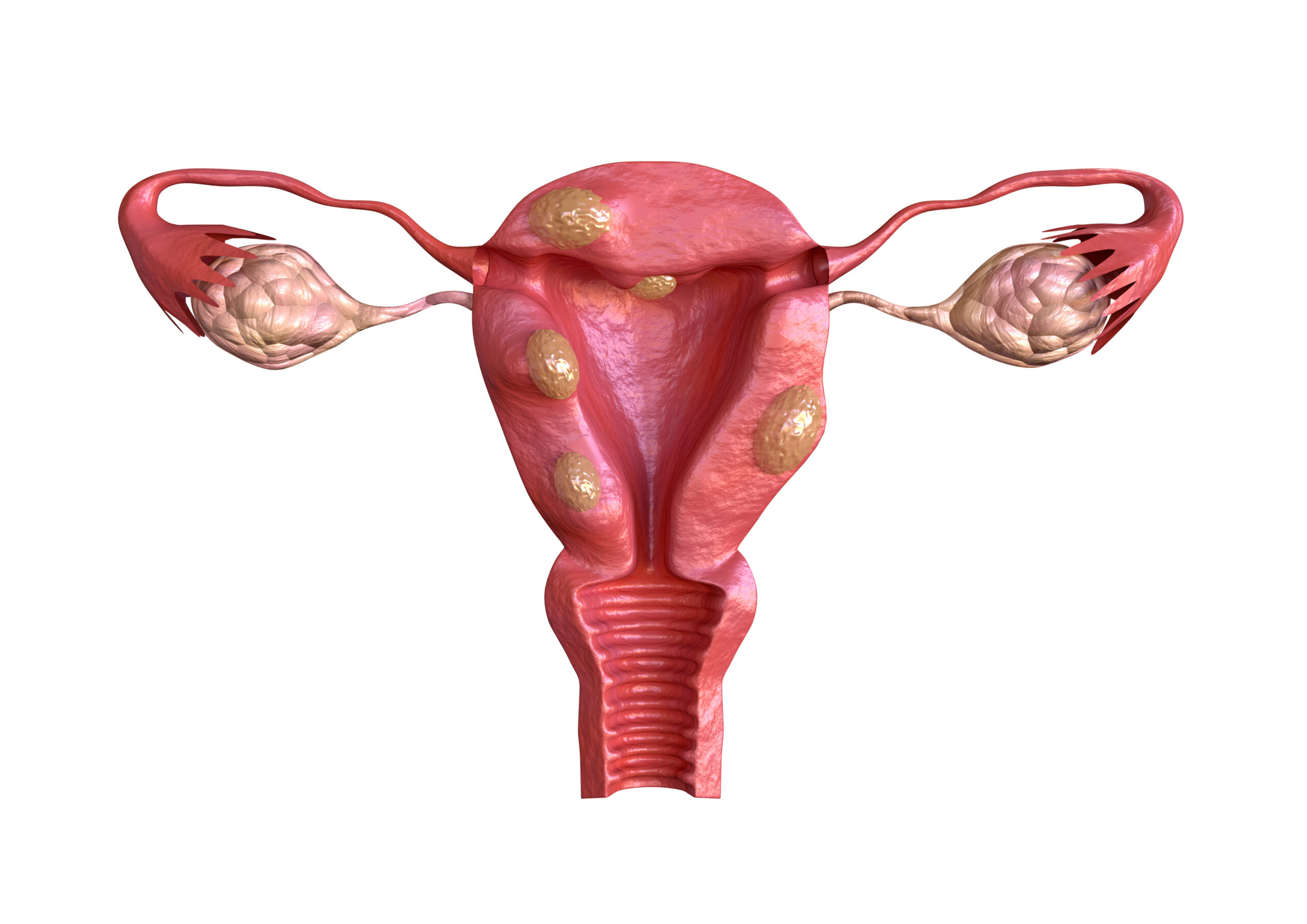
05 Dec Is Your Pelvic Pain Being Cause By Uterine Fibroids?
In years past, uterine fibroids were most commonly thought to be a health issue that should only concern women in their 40s and older. However, today uterine fibroids can be seen in women in their 20s and 30s. Seventy to 80 percent of American women will develop uterine fibroids by the age of 50. Moreover, nearly 90% of African American women will develop this condition by the age of 50. Such a high prevalence of uterine fibroids in women of all ages and races is cause for big concern.
Uterine Fibroids and African American Women
African American women are not only more prone to develop uterine fibroids, but they also experience more severe symptoms. African American women will often start to develop uterine fibroids at an earlier age and will suffer from the symptoms associated with uterine fibroids for a longer period of time due to delaying medical attention. As a result of the delay in medical care, they present with more serious and pronounced symptoms by the time they see a doctor.
Although the likelihood of developing fibroids is primarily based on an individual’s genetics, a woman’s exposure to chemicals known as hormone disruptors may contribute to health problems like fibroids and endometriosis. Hormone disruptors can interfere with a woman’s endocrine system. A healthy and balanced endocrine system is critical for a woman’s overall health and wellbeing as it controls and coordinates your energy levels, reproductive system, stress levels, and many other factors.
One interesting observation can be made as it relates to risk factors that seem to increase the risk of uterine fibroids in African American women. A study by the American Journal of Epidemiology in 2012 suggests the high incidence of uterine fibroids in African American women could be related to the use of lye-based hair relaxers. These products may contain a group of chemicals called phthalates which are hormone disruptors
Unfortunately, hormone disruptors can be found in products women and children use every day. According to the FDA, phthalates have been used in cosmetics products, nail polishes, hair sprays, fragrances, and many other products. For a complete list, check out the FDA’s website.
What are uterine fibroids?
Uterine fibroids are also called uterine myomas or leiomyomas (from the latin leio- “smooth”, myo- “muscle”, oma “tumor”). These are benign tumors (non-cancerous) that grow in the uterine wall. They can grow alone or in clusters. Sizes of fibroids vary from as large as a baseball to so small they cannot be seen with the naked eye. Uterine fibroids can cause severe abdominal pain followed by heavy periods.
What are the risk factors associated with uterine fibroids?
Your risks of developing uterine fibroids are three times higher if your mother has or had uterine fibroids. Additional risk factors include:
- A poor diet
- Obesity
- Starting your period at an early age
- Alcohol consumption
- Vitamin D deficiency
Treatment of Uterine Fibroids
According to the CDC, hysterectomies are “the second most frequently performed major surgical procedure among reproductive-aged women.” The most recent data from the CDC states that approximately 600,000 women undergo a hysterectomy in the United States each year. However, this data is old and recent statistics are not available. So it is likely that these numbers are even higher than are reported.
Many women will undergo a hysterectomy to treat uterine fibroids. And although doctors encourage women to use hysterectomy only as a last resort a hysterectomy is still a very popular surgical option for the treatment of uterine fibroids.
In a study published in 2013 by the American Journal of Obstetrics and Gynecology, the medical records of over 3,397 women
were analyzed. The research looked at medical records spanning over a 10-month period from 52 hospitals in Michigan. All of the women whose records were analyzed had undergone a hysterectomy for a benign gynecological disease. These included uterine fibroids, abnormal uterine bleeding, endometriosis, and pelvic pain.
Additionally, “The researchers found that 37.7% of women had no documentation indicating they underwent alternative treatment prior to undergoing a hysterectomy. What is more, the pathological findings following surgery among 18.3% women – almost 1 in 5 – did not support the need for a hysterectomy.”
In a study published in 2013 by the American Journal of Obstetrics and Gynecology, the medical records of over 3,397 women were analyzed. The research looked at medical records spanning over a 10-month period from 52 hospitals in Michigan. All of the women whose records were analyzed had undergone a hysterectomy for a benign gynecological disease. These included uterine fibroids, abnormal uterine bleeding, endometriosis, and pelvic pain.
Additionally, “The researchers found that 37.7% of women had no documentation indicating they underwent alternative treatment prior to undergoing a hysterectomy. What is more, the pathological findings following surgery among 18.3% women – almost 1 in 5 – did not support the need for a hysterectomy.”
The Risks of a Hysterectomy
A hysterectomy puts a woman into surgical menopause, which is very different than natural menopause. Surgically induced menopause will result in an immediate decline in a woman’s progesterone, estrogen, and testosterone production.
For a woman who wishes to have children one day, a hysterectomy also means that she will face permanent infertility. The American Urogynecologic Society conducted a survey of more than 1200 women and found that 13 percent of them believed they could retain their fertility following a hysterectomy.
Moreover, a hysterectomy places a woman at a higher risk of developing blood clots, infection, pain during sexual intercourse, urinary incontinence and injury to nearby organs.
There ARE Alternatives Treatment Options: Uterine Fibroid Embolization (UFE)
Rarely is a hysterectomy the safest and best decision for the treatment uterine fibroids. Women do have other, less invasive, less risky and less aggressive treatments options available, besides the removal of their uterus via hysterectomy.
Uterine fibroids are actually easy to treat with a minimally invasive procedure known as Uterine Fibroid Embolization. The procedure requires very little downtime and has no serious side effects. This procedure became available in the early 1990’s and has proven itself to be a safe and effective treatment.
How is UFE Performed?
The procedure is formed in a cath lab, also known as an angiography suite, which uses state-of-the-art x-ray imaging. The procedure is done by an interventional radiologist, a doctor that specializes in using x-ray guidance to perform minimally invasive procedures. During the procedure, a catheter is inserted through a small puncture in the femoral artery located in your upper thigh. The catheter is then guided to the arteries that supply blood to the fibroids using x-ray guidance.
X-ray contrast is injected. The contrast flows into the uterine artery and its branches which makes them visible on the angiography screen. This enables the interventional radiologist performing the procedure to successfully inject the blood vessel with a solution that blocks and seals the arteries responsible for providing blood to the fibroids. The fibroids, being starved of blood, shrink and the patient’s symptoms improve.
Uterine Fibroid Embolization is a highly effective yet minimally invasive procedure. In the majority of patients, the procedure completely eliminates their uterine fibroid symptoms without the risks typically associated with hysterectomy.
The procedure can be in performed in an outpatient setting and the patient can recover in the comfort of their own home rather than an overnight stay in the hospital.
The side effects of Uterine Fibroid Embolization are minor and include:
- Nausea, vomiting
- Pelvic pain or cramping
- Fever
- Malaise
Uterine Fibroid Embolization must be performed by an interventional radiologist. At Vivid Vascular, Dr. Adam Gropper performs this procedure in our state-of-the-art cath lab.
To know if you are a candidate for a UFE or if it is a suitable option for you, contact Vivid Vascular for a consultation.





No Comments